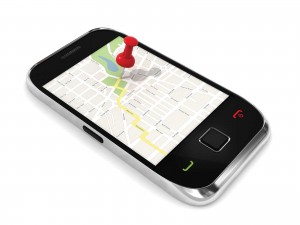 Tech in class
Tech in class
Owing to the benefits that technology has brought to the classroom, at all levels (primary, secondary, or college), the teaching learning process has improved a great deal. Youth Inc brings you a series on tehnology in the classroom, the first on the use of mapping technologies.
It is important to recognise the rise and significance of information and communication technologies (ICTs) and new media in contemporary education. With this idea of collaboration and consistency of approach in mind, it is only right to encourage a similar focus in our higher education institutions. Educational institutions must evolve to adopt ICTs to cater to current needs. With the advent of technology in several spheres of education, new mapping tools have also been put to some creative use in classrooms. Tools like Google Earth and Google Maps, whenever available in the classroom, have made it easier for teachers to explain and for students to relate to topics. Such technologies can be applied in obvious fields, like geography, history and architecture, but can also be easily extended to music, literature, geology and biology as well. For instance, locations of historical events, along with details about the event, images, and other information, can easily be plotted on a map. Students can then look for relationships and trends in the mapped data.
iPhones and Android devices, to name a couple, enable users to geotag pictures and find out geographic locations with the latitude and longitude. This data can then be looked up on Google Maps and Google Earth for study.
Those who use visualising technologies in the classroon say that they encourage students to be active group learners. Research on the topic also suggests that digital systems can effectively engage students with social issues, transforming them to be agents of change in their communities.
This can be done by linking information about location with the demographic and environmental data. Instructors who have used digital mapping in the classroom are quick to elaborate on the difference in student understanding and retention of any topic. This of course, cannot be accomplished easily with only two-dimensional printed maps. It is the graphic representation that makes the difference. Needless to say, digital mapping programmes cannot simply be integrated into the existing syllabus. In order for integration to be successful, curricula must be devised to exploit the full potential of the technology. Teachers across the world have used mapping technology to a great degree of success. “The ease of using these mapping tools like Google Earth makes them popular.
They also help present a vast amount of information applying directly or indirectly to learning in many topics. The ability of the software to provide the information in a threedimensional model changes the game. It not only engages students better, but helps them extend their imagination to other topics as well. The subjects can range from social sciences, history, art, engineering and any other topic that has a geographic component,” says engineering student Sandeep Sarathi.
Experiences of many teachers suggest that students tend to learn such topics passively. Research, however, points out that understanding is enhanced when classroom study is clubbed with visual and imaginative aids. An integrated approach is an important means to learn about the finer points of any topic at hand. “Since these tools help students visualise pressing issues in the social and geographical context, they can derive current applications of the topics. By using overlays, these programmes can enable students to examine a wide range of relationships,” says Meena Saxena, a social studies teacher.
An added advantage is that since technologies like Google Earth are free and dependent only on the Internet, students can explore them on their own, whether for understanding and doing their homework or just for fun. “Students can create their own representations of their data as they see them. This can be done by inserting digital photos, hyperlinks, or video links,” adds Saxena. Integrating this technology in education is the next step forward for teachers.
Mapping tools that are available online, and are either free or inexpensive:
• Google Maps: http://maps.google.com
• Google Earth: http://earth.google.com
• ScribbleMaps: http://scribblemaps.com
• Simply Map (An application that creates thematic maps): http://simplymap.com:
• ArcGIS (for creating your own map or accessing maps made by others): www. arcgis.com
• BatchGeo (use data to create a map): http://batchgeo.com
• GPS4Cam http://gps4cam.com/: iPhone and Android app that tags pictures
Volume 1 Issue 11





























